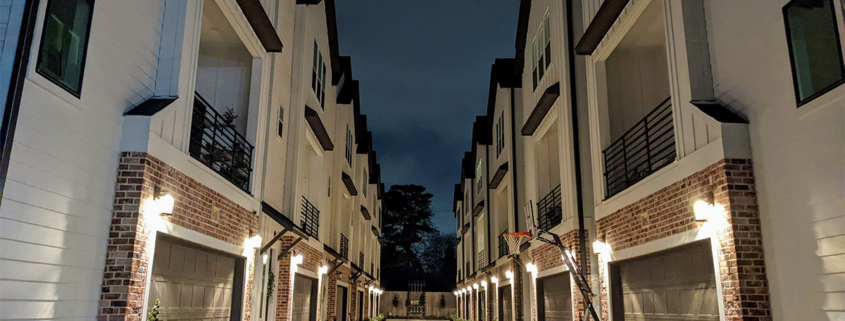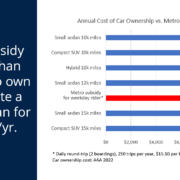Houston’s Mini-Kaihatsu, Sinking False Alarm, and more
Several smaller items this week:
- Report: Houston is one of the fastest sinking cities on Earth, could ‘disappear’. Let’s check the math folks. Houston elevation is 79′ = 2408cm. Losing 2cm/year x 100 years = -200cm. Sea level rise of 1cm every 5 years for 100y = 20cm. New elevation in 2122 = 2188cm, almost 72ft! Doesn’t sound anywhere close to ‘disappearing’…
- Big NYT fail on road safety: the clear inflection point in the graph is the rise of distracting smartphones, yet they’re NOT EVEN MENTIONED ONCE. Instead it’s anti-car, anti-SUV, anti-speed, and anti-rideshare. All agenda instead of real problem-solving.
- Kinder: Houston, Dallas led metro area growth in 2021 even as their urban cores lost population (news story, hat tip to Oscar). Harris County declining a bit even while the metro grows. I think a lot of people used the pandemic to move out to the nicer newer suburbs (commutes less of a worry in a remote work world), and the backfill immigration into the city wasn’t there as it usually is, especially from international immigrants. Crime spike hasn’t helped either. Harris County really has to turn it around before we end up in the same place as Dallas County with significant outflows. Once people and employers flee, it’s a negative reinforcing cycle 🙁
- The Texas Pilgrim: It’s Time for Comprehensive School Choice in Texas. Hear, hear! Let’s hope they can get some traction in the next legislative session.
- A pretty cool annexation history map of Houston
- Book Review: The Making of Urban Japan, by Salim Furth. The review notes similarities between Tokyo’s mini-kaihatsu (a dozen townhomes fronting a small alley) and similar developments in Houston:
“The concept is the same, and it’s no coincidence that both arise in places with light regulation, strong demand, and little public streets funding. As I wrote about Houston:
Houstonians achieve privacy by orienting many new townhouses onto a share courtyard-driveway, sometimes gated, which creates an intermediate space between the private home and the public street…
The courtyard-driveways also provide a shared play space, as evidenced by frequent basketball hoops. Despite what Jane Jacobs may have told you, city streets are not viable play spaces for 21st-century children. But cul-de-sacs can be. Houston’s courtyard-and-grid model may be the ideal blend, unlocking the connectivity of a city while delivering the secure sociability of a cul-de-sac to a large share of homes.
This piece first appeared at Houston Strategies Blogspot.
Tory Gattis is a Founding Senior Fellow with the Urban Reform Institute (formerly Center for Opportunity Urbanism) and co-authored the original study with noted urbanist Joel Kotkin and others, creating a city philosophy around upward social mobility for all citizens as an alternative to the popular smart growth, new urbanism, and creative class movements. He is also an editor of the Houston Strategies blog.
Photo: courtesy Houston Strategies









